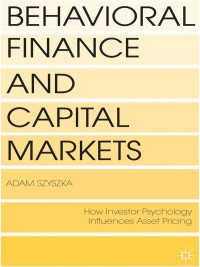

Assume that historical returns and future returns are independently and identically distributed and drawn from the same distribution. a. Calculate the 95% confidence intervals for the expected annual return of four different investments included in the tables (the time period spans 92 years). b. Assume that the values in the tables are the true expected return and volatility (i.e., estimated without error) and that these returns are normally distributed. For each investment, calculate the probability that an investor will not lose more than 4% in the next year. (Hint: For each investment, you can use the function normdist(x,mean,volatility,1) in Excel to compute the probability that a normally distributed variable with a given mean and volatility will exceed x where x in this case is -4%. Then subtract that probability from 100% to find the probability that an investor will not lose more than 4%.) c. Do all the probabilities you calculated in part (b) make sense? If so, explain. If not, can you identify the reason? Average Annual Returns for U.S. Small Stocks, Large Stocks (S&P 500), Corporate Bonds, and Treasury Bills, 1926-2017 Investment Average Annual Return Small stocks 18.7% S&P 500 12.0% Corporate bonds 6.2% Treasury bills 3.4% (Click on the following icon in order to copy its contents into a spreadsheet.) Volatility of U.S. Small Stocks, Large Stocks (S&P 500), Corporate Bonds, and Treasury Bills, 1926-2017 Investment Return Volatility (Standard Deviation) Small stocks 39.2% S&P 500 19.8% Corporate bonds 6.4% Treasury bills 3.1% Assume that historical returns and future returns are independently and identically distributed and drawn from the same distribution. a. Calculate the 95% confidence intervals for the expected annual return of four different investments included in the tables (the time period spans 92 years). b. Assume that the values in the tables are the true expected return and volatility (i.e., estimated without error) and that these returns are normally distributed. For each investment, calculate the probability that an investor will not lose more than 4% in the next year. (Hint: For each investment, you can use the function normdist(x,mean,volatility,1) in Excel to compute the probability that a normally distributed variable with a given mean and volatility will exceed x where x in this case is -4%. Then subtract that probability from 100% to find the probability that an investor will not lose more than 4%.) c. Do all the probabilities you calculated in part (b) make sense? If so, explain. If not, can you identify the reason? Average Annual Returns for U.S. Small Stocks, Large Stocks (S&P 500), Corporate Bonds, and Treasury Bills, 1926-2017 Investment Average Annual Return Small stocks 18.7% S&P 500 12.0% Corporate bonds 6.2% Treasury bills 3.4% (Click on the following icon in order to copy its contents into a spreadsheet.) Volatility of U.S. Small Stocks, Large Stocks (S&P 500), Corporate Bonds, and Treasury Bills, 1926-2017 Investment Return Volatility (Standard Deviation) Small stocks 39.2% S&P 500 19.8% Corporate bonds 6.4% Treasury bills 3.1%








